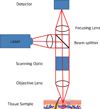Noninvasive clinical assessment of port-wine stain birthmarks using current and future optical imaging technology: a review
- PMID: 22804872
- PMCID: PMC3508172
- DOI: 10.1111/j.1365-2133.2012.11139.x
Noninvasive clinical assessment of port-wine stain birthmarks using current and future optical imaging technology: a review
Abstract
Port-wine stain (PWS) birthmarks are one class of benign congenital vascular malformation. Laser therapy is the most successful treatment modality of PWS. Unfortunately, this approach has limited efficacy, with only 10% of patients experiencing complete blanching of the PWS. To address this problem, several research groups have developed technologies and methods designed to study treatment outcome and improve treatment efficacy. This article reviews seven optical imaging techniques currently in use or under development to assess treatment efficacy, focusing on: reflectance spectrophotometers/tristimulus colorimeters; laser Doppler flowmetry and laser Doppler imaging; cross-polarized diffuse reflectance colour imaging system; reflectance confocal microscopy; optical coherence tomography; spatial frequency domain imaging; and laser speckle imaging.
© 2012 The Authors. BJD © 2012 British Association of Dermatologists 2012.
Conflict of interest statement
Dr. Durkin is a cofounder of the company and owns equity interests in Modulated Imaging Inc which collaborated in the development of the spatial frequency domain imaging (SFDI) system used here.
Figures









References
-
- Tallman B, Tan OT, Morelli JG, Piepenbrink J, Stafford TJ, Trainor S, Weston WL. Location of port-wine stains and the likelihood of ophthalmic and/or central nervous system complications. Pediatrics. 1991;87(3):323–327. - PubMed
-
- Loewe R, Oble DA, Valero T, Zukerberg L, Mihm MC, Nelson JS. Stem cell marker upregulation in normal cutaneous vessels following pulsed-dye laser exposure and its abrogation by concurrent rapamycin administration: implications for treatment of port-wine stain birthmarks. Journal of Cutaneous Pathology. 2010;37:76–82. - PMC - PubMed
-
- Kelly KM, Choi B, McFarlane S, Motosue A, Jung B, Khan MH, Ramirez-San-Juan JC, Nelson JS. Description and analysis of treatments for port-wine stain birthmarks. Arch Facial Plast Surg. 2005;7(5):287–294. - PubMed

